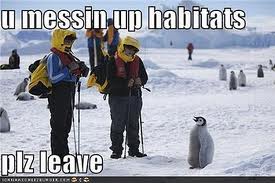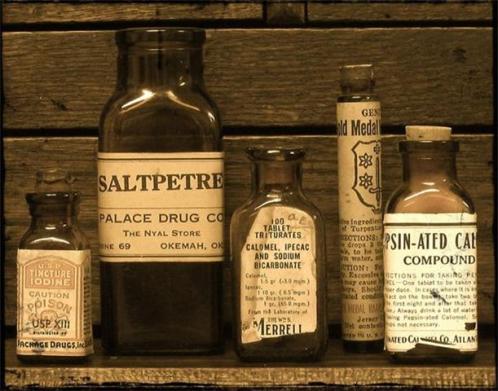Archive for the ‘Eye Openers’ Category
18 Dec
Dirty Diesel
Why is diesel now bad news?

The mayor of Paris wants the city to become ‘semi-pedestrianised’
The Mayor of Paris Anne Hidalgo wants to ban diesel cars and the pollution they bring from the streets of the French capital. But not long ago, diesel engines were thought to be environmentally friendly. What could have gone wrong?
Opinion on diesel cars has swung widely over the years.
Diesel is a more efficient fuel than petrol, but in the past diesel engines were often noisy and dirty.
Then, with growing concerns over climate change, car manufacturers were urged to produce cleaner, quieter diesel cars to capitalise on their extra fuel efficiency.
The cars were fitted with a trap to catch the particles of smoke associated with the fuel. Several governments rewarded the manufacturing improvements by incentivising the purchase and use of diesel cars.
But the policy has backfired.
Going into reverse
First, there have been problems with the particle traps – some drivers have removed them because they sometimes don’t work properly unless the car is driven hot.
Second, the diesels are still producing nitrogen dioxide (NO2), which irritates the lungs of people with breathing problems. Diesels make several times more NO2 than petrol cars.
Now, in order to meet European air pollution laws, politicians are being forced into an embarrassing U-turn, telling drivers that they’ve decided they don’t much like diesels after all.
MPs in the UK have mooted a scrappage scheme for diesel cars, while the mayor of Paris has called for a ban.
Several European nations are currently in breach of EU clean air laws.
The EU’s NO2 limit was exceeded at 301 sites in 2012, including seven in London. The concentration on Marylebone Road was more than double the limit.
Districts in Athens, Berlin, Brussels, Madrid, Paris, and Rome are also exceeded the ceiling.
Not just carbon: Key pollutants for human health
- Particulate matter (PM): Can cause or aggravate cardiovascular and lung diseases, heart attacks and arrhythmias. Can cause cancer. May lead to atherosclerosis, adverse birth outcomes and childhood respiratory disease. The outcome can be premature death.
- Ozone (O3): Can decrease lung function and aggravate asthma and other lung diseases. Can also lead to premature death.
- Nitrogen oxides (NO2): Exposure to NO2 is associated with increased deaths from heart and lung disease, and respiratory illness.
- Polyaromatic hydrocarbons (PAHs), in particular benzo a-pyrene (BaP): Carcinogenic.
Politicians are now scurrying to persuade the courts that they are obeying an EU demand to clean up the air as soon as possible.
Source: BBCNews Read more
6 Nov
Vampyrella
Ever heard of them?
I hadn’t.
Microscopic vampire amoebas are swarming everywhere
Single-celled bloodsuckers called vampyrellids creep through the soil beneath your feet
Within a few metres of you, almost certainly, a vampire is feeding. It grabs its victim and punctures its skin, then drains its bodily fluids. The process takes just minutes. Afterwards the withered husk of the luckless prey is discarded, and the vampire settles down to digest its meal – and maybe make some new vampires.
But this is no Transylvanian immigrant, nor even a perpetual teenager that thinks lurking outside a girl’s bedroom is acceptable behaviour. The vampires here are single-celled organisms called vampyrellids that prey on all manner of other single-celled organisms – and even on bigger animals such as worms. They are voracious and ancient, and according to two recent studies, they are everywhere.
“Vampire amoebas” were first described in 1865 by the Russian biologist Leon Semenowitj Cienkowski, one of the founders of microbiology. He discovered bright red single-celled creatures, rather like amoebas, which attacked algae by perforating their cell walls and extracting their contents. Evidently conscious of the similarity to vampire folklore, Cienkowski called the microbes Vampyrella.
Several more species followed, which are collectively known as vampyrellids. Nowadays the vampyrellids are thought to belong to an enormously diverse group of single-celled organisms called Rhizaria.
Their macabre feeding style has fascinated microbiologists for 150 years. A 1926 study describes how Vampyrella lateritia “spreads partly around the doomed cell” and “within a minute or so the transverse walls of the attacked cell begin to bend gradually inward”. When they finally buckle, the vampire amoeba “suddenly swells” due to “the injection of algal cell contents into the animal through an oval opening”.
Source: BBCNews Read more
9 Oct
Are Natural Foods Natural?
Most US packaged foods labeled ‘natural’ have GM ingredients – report
Non-profit finds that while ‘organic’ products lack GM ingredients, many cereals, chips and infant formula contain them

Three tomatoes grown from genetically modified seeds. Photograph: Alamy
A majority of US packaged foods labeled as “natural” and tested by Consumer Reports actually contained a substantial level of genetically modified ingredients, according to a report issued Tuesday by the non-profit product testing group.
Consumers are being misled by the “natural” label, said Urvashi Rangan, executive director of Consumer Reports Food Safety and Sustainability.
Consumer Reports said it had conducted a survey of more than 80 different processed foods containing corn or soy, the two most widely grown genetically engineered crops in the United States, to determine whether labeling claims for GMO presence were accurate.
While foods labeled as “non-GMO”, or “organic” were found to be free of genetically modified corn and soy, virtually all of the foods labeled as “natural” or not labeled with any claim related to GMO content contained substantial amounts of GMO ingredients, Consumer Reports said.
GMOs were present in breakfast cereals, chips and infant formula, the group said.
Source: TheGuardian Read more
15 Aug
Make you Fink on Friday
Why you should ditch the tumble dryer and use your washing line

‘Our ancestors knew a thing or two about laundry and were keen to get the best results with the least expense or labour.’ Photograph: Julie Habel/Corbis
Washing lines, strung up in back yards or criss-crossing courtyards, have become an image of a domestic past. According to the Energy Saving Trust we are all using our washing lines less and tumble dryers take a bigger share of the load. Washing lines, they argue, should not be a thing of the past but have a vital energy saving role in the future. But is the humble line still a useful tool in modern Britain?
If you take a look at the earliest images of laundry, there is not a washing line in sight. Instead clothes are spread out to dry upon meadows or draped over bushes. An Elizabethan map of London shows Moorfields in the days when it was still an area of open land on the edge of the city; little figures sit on the ground next to pegged-out clothes, the shape of shirts clearly visible. The best published advice on laundry matters, such as Henry Mascell’s Profitable Book of 1597, suggested drying your washing over lavender bushes for an additional bleaching effect.
The washing line is a child of coal fires. Medieval and Tudor laundry relied on wood ash to remove grease, after which the laundry was taken to a local river or stream and beaten to drive out the dirt. But from the 1660s onwards, wood for fires was slowly replaced by coal. Coal ash did not take the grease out of clothes as wood ash did, so people had to turn to soap, and early forms of soap only activated in hot water. The age of the washing copper heater and the washing line had begun.
Gradually more and more people did their laundry at home, far from the drying fields that had lined the rivers and streams of Britain’s towns and cities. Outdoor drying, however, remained the preferred option. Back yards were too small, and generally too dirty for a family’s wash to be laid out flat, but draped over a line, and pegged in place, sheets and shirts could still benefit from sun and fresh air.

Children sitting under a washing line hanging across a courtyard in a slum area of London in 1889. Photograph: General Photographic Agency/Getty Images
Up and down the country the emergence of a washing line in the back yard on a Monday, the product of a clean change of clothes on Sunday, became a sign of housewifely competence and respectability. The poorest of the Victorian poor were unable to join in this weekly ritual. With one set of clothing in constant wear, they could only achieve clean clothes if they were washed late in the evening when the family could be naked in bed, and dried overnight to be put on, probably still damp, in the morning. The Monday washing line was a public statement to all your neighbours that, while you may not be exactly rich, nonetheless your household was holding its head high and managing to do more than just survive. The washing line could be a badge of pride, its absence a symbol of shame.
So what of today’s laundry needs?
Increasing numbers of us live in flats with little access to outdoor drying space and laundry habits have to adapt. Washing lines over the bath make for damp air and clutter, so a preference for tumble drying clothes is understandable. Even for those who do have access to outdoor space, tumble dryers offer the chance to defy the weather.
But there are still two very good practical reasons for hanging on to your washing line, in addition to the ecological argument about energy use, not to mention that unbeatable feel and scent of line-dried clothes. Sunlight bleaches beautifully, if you would like the whitest of whites then there is nothing so effective as hanging them out in the sun. But the strongest practical argument for a washing line comes from the anti-bacterial effect of sunlight: UV light kills the bacteria that may survive a cool wash, both those that might have a health impact and those that cause clothes to smell.
Our ancestors knew a thing or two about laundry and were keen to get the best results with the least expense or labour. So whether you dry it flat on the lawn, draped over the hedge or hanging from a line, don’t forget that good old fresh air and sunlight still have a lot to offer.
Source: TheGuardian
Opinion:
In these days of energy conservation it is a crime to use a drier, even in an apartment, there are solutions.
3 Jul
Why?
Yes, this is the creek that runs along the other side of the botequim (neighbourhood bar) to my place.
It’s disgusting.
It stinks on a warm to hot day.
It’s eroding and will soon threaten the botequim.
The neighbouring bar (not our botequim) dumps their rubbish in it.
Our sewerage goes into it untreated.
The local fish monger’s drains empty fish guts into it every day.
It feeds into the Rio Cabuçu, that eventually empties in the Sepetiba Bay; one of the most polluted parts of Rio de Janeiro.
Until the people take a stance scenes like this happen around the world.
The local government isn’t interested because to rectify this situation attracts too few votes.
There is no policing of the rivers and creeks to see who is throwing away their rubbish here instead of using the rubbish collection services.
Why?
19 Jun
Catch 22
Most of us love our air-conditioning.
I don’t have it at home, but I do at work.
But here’s a thought; the more we use air-conditioning, the more air-conditioning we need – Catch 22
Air conditioning raising night-time temperatures in the US
Heat from cooling systems now raises some urban temperatures by more than 1C at night, reports Climate News Network

Air conditioning in Phoenix is now raising night-time temperatures Photograph: Witold Skrypczak/Alamy
Researchers in the US have identified a way in which city-dwellers are inadvertently stoking up the heat of the night – by installing air conditioners.
Because the cities are getting hotter as the climate changes, residents are increasingly investing in aircon systems − which discharge heat from offices and apartment blocks straight into the city air. And the vicious circle effect is that cities get still warmer, making air conditioning all the more attractive to residents.
According to scientists at Arizona State University, the air conditioning system is now having a measurable effect. During the days, the systems emit waste heat, but because the days are hot anyway, the difference is negligible. At night, heat from air conditioning systems now raises some urban temperatures by more than 1C.
Source: The Guardian Read more





























Recent Comments